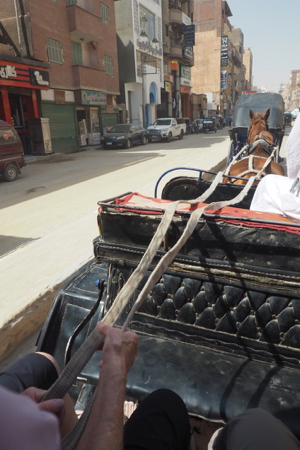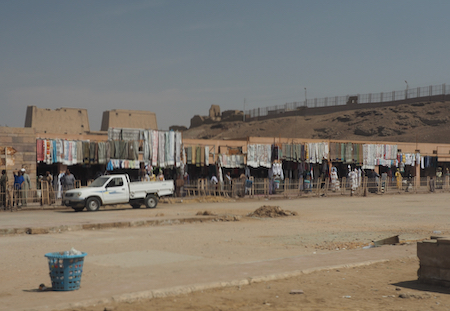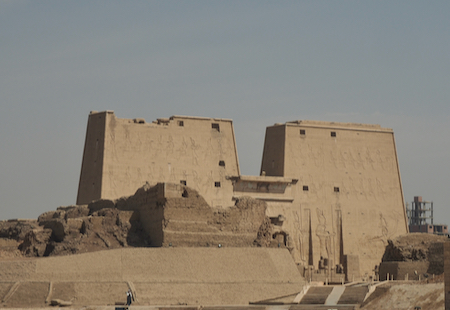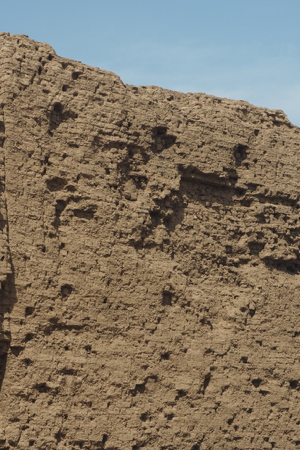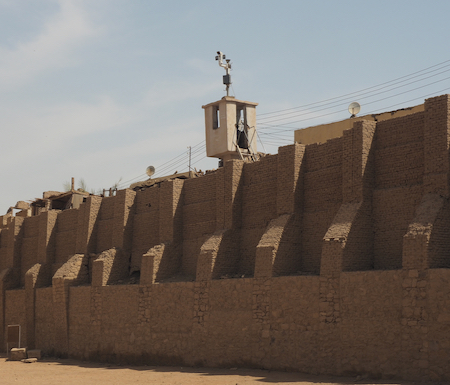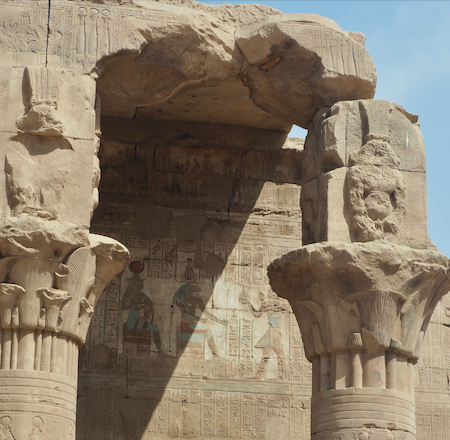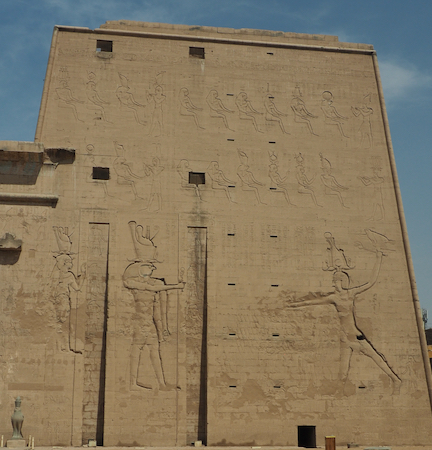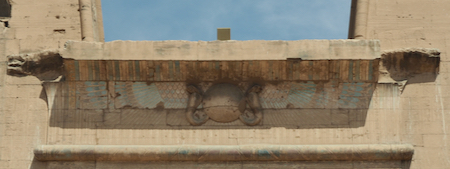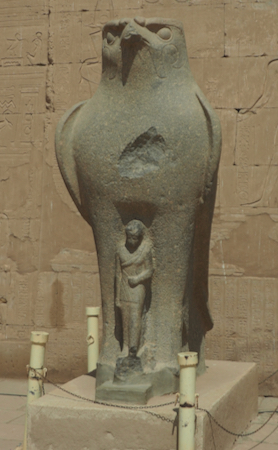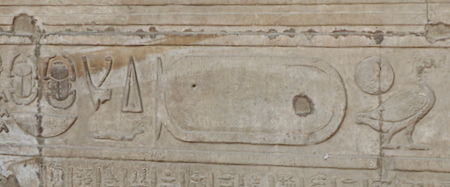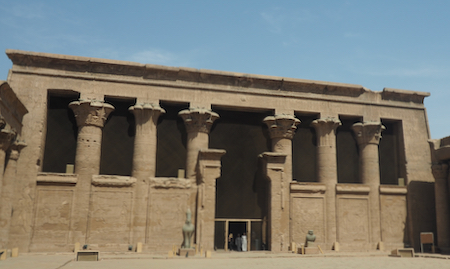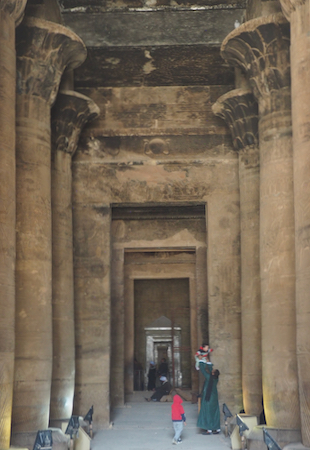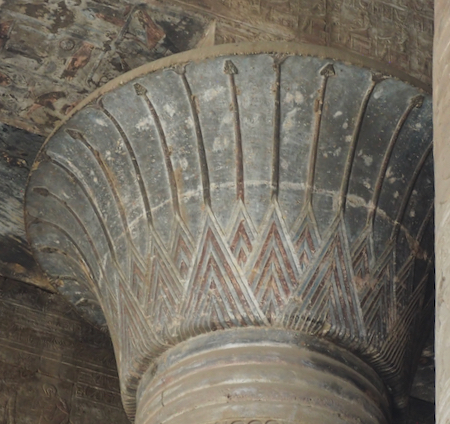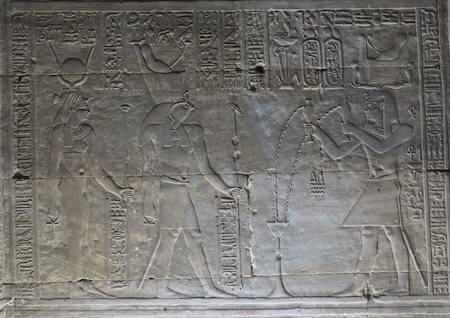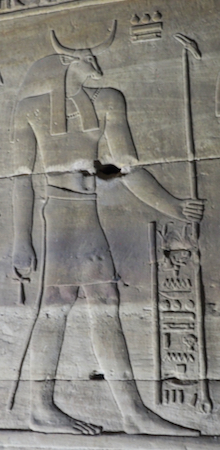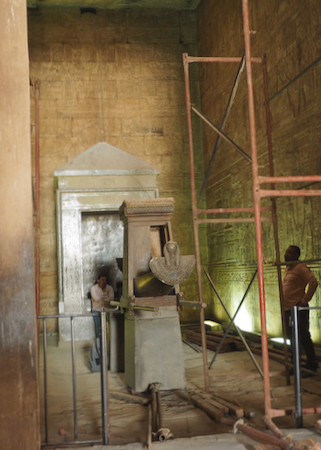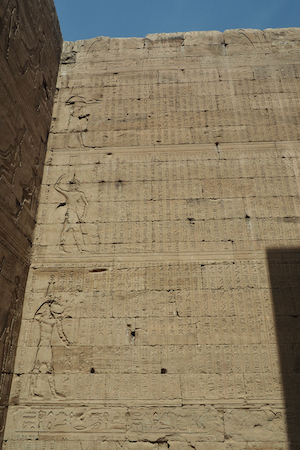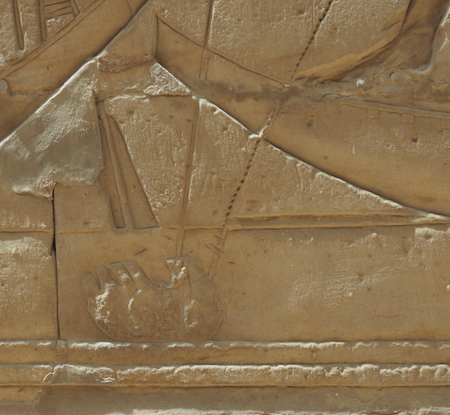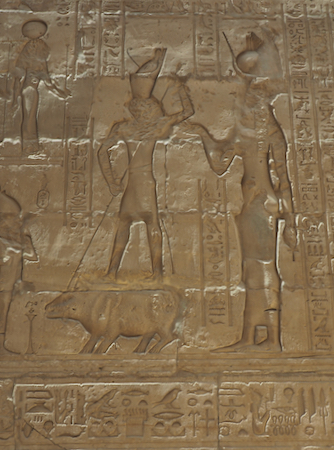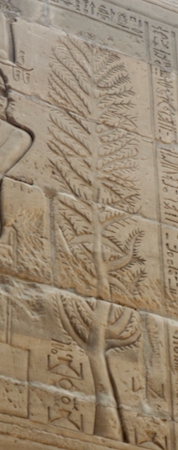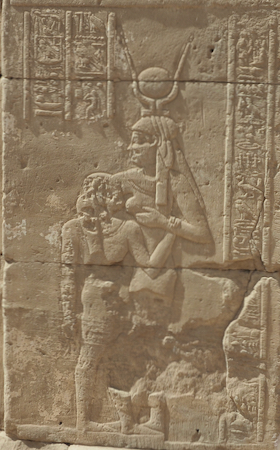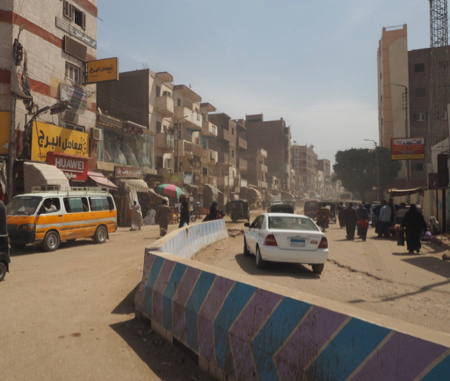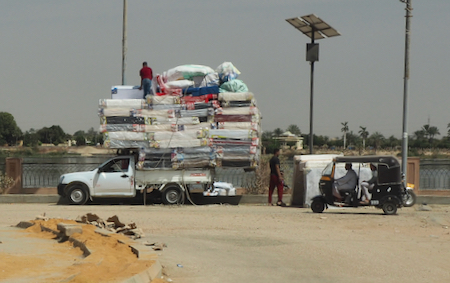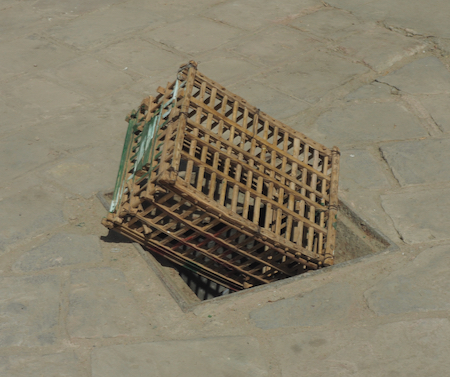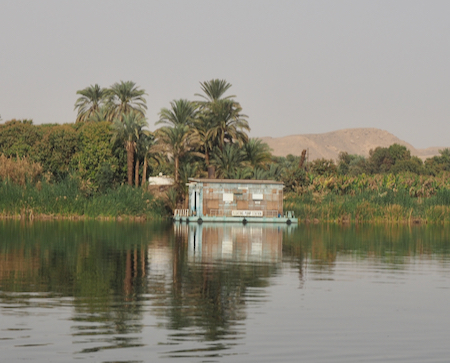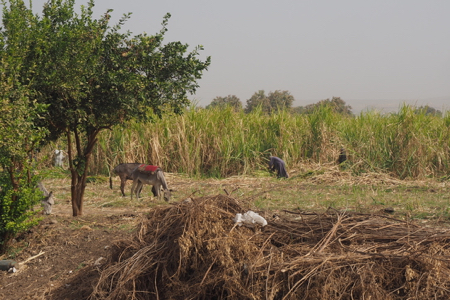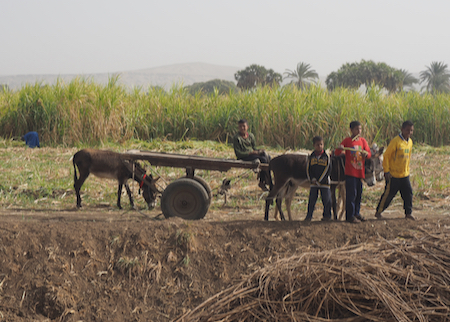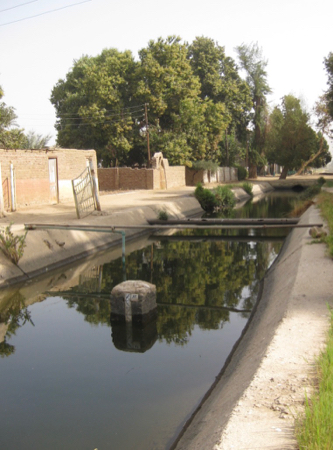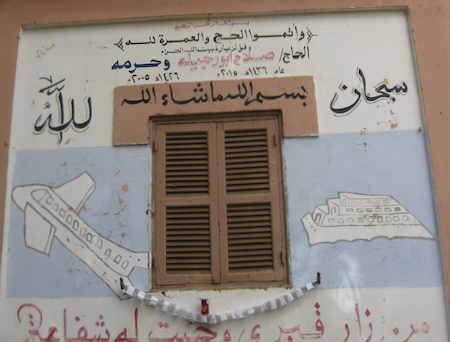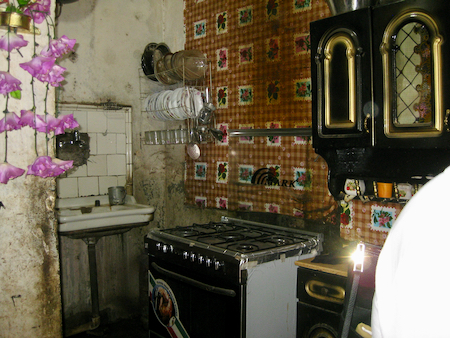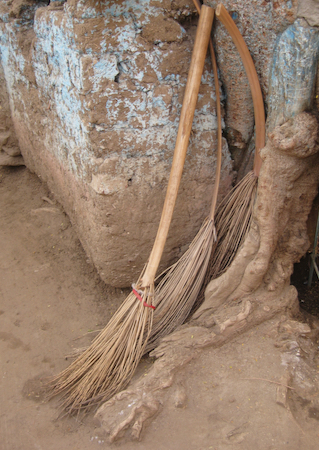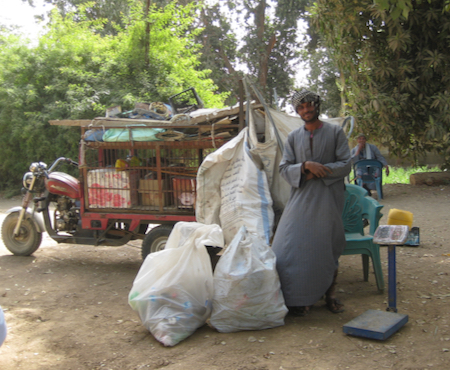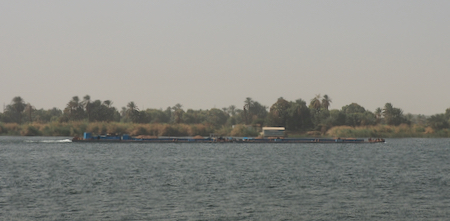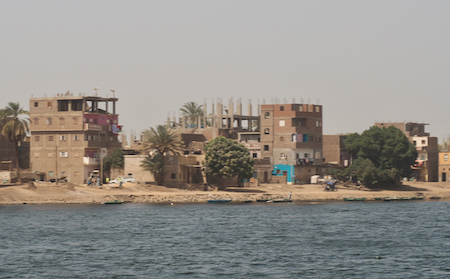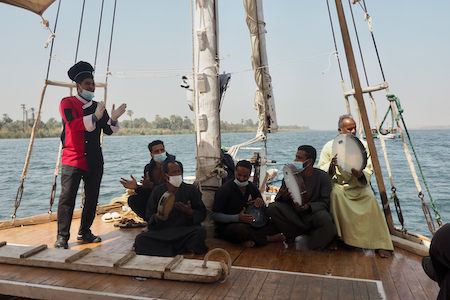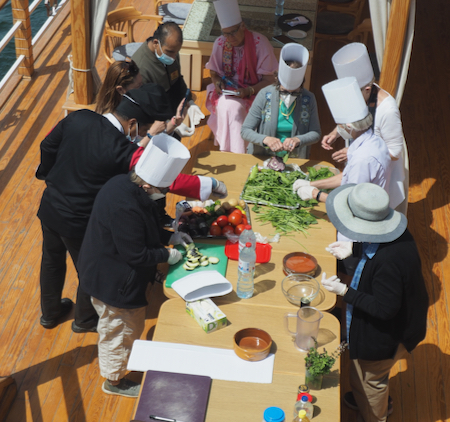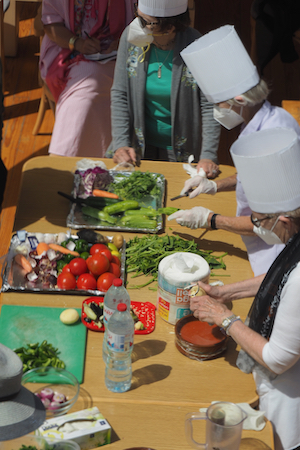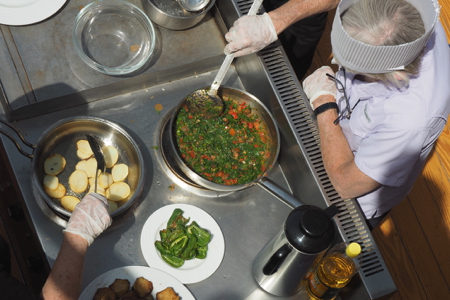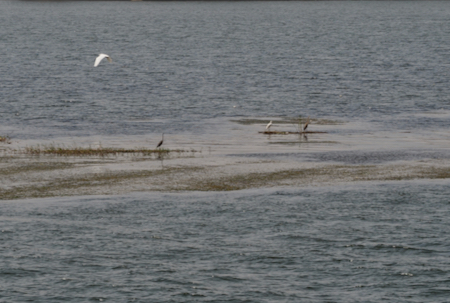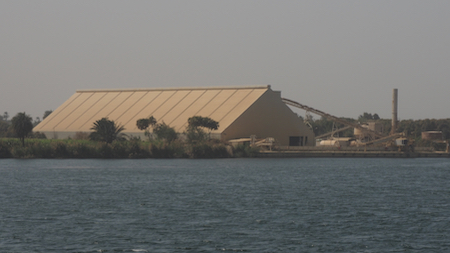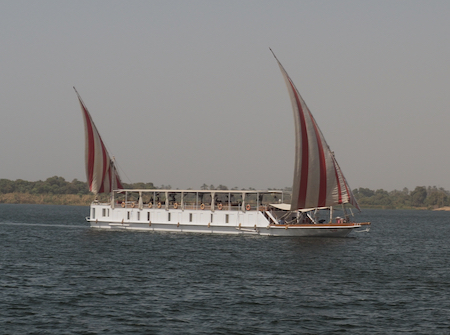Sun., 3/6/22 - Edfu
Today our boat docked at Edfu to visit the Temple of Edfu, reputed to be the most complete ancient temple so far discovered. Transportation from the ship to the temple, through the town of Edfu, was by horse carriage. (OAT believes its travelers should experience all possible modes of transport while in a given foreign country.)
The Temple is dedicated to Horus and the story of his conquering evil by stabbing his brother Seth, who represented evil. Construction took place during the Ptolemaic period between 237 and 57 BCE. Edfu Temple was discovered/identified in 1798 by a French expedition. Only the upper parts of the pylons (entry gate structures) were visible. It wasn’t until 1860 that Mariette, a French Egyptologist, began moving the sand to expose the building.
A second link - persevere through the ads.)
Our tour took us through the main gate, the two large pylons, the inner court of libations, the column hall, the offering hall and store rooms, another anti-room, and into the “holy of holies” and 11 little rooms around it for each of the gods. The inner courtyard of libations is the only place in the temple where commoners could enter to celebrate the gods and the life-giving flood of the Nile during those five extra calendar days. The hall of columns had capitals of papyrus buds or leaves, palm fronds, lotus blossoms or combinations. They are very different from Greek columns. Every inch of wall, ceiling, or column was carved with scenes of gods - most of Horus - and hieroglyphs recording the stories about the gods and kings. There is still evidence of the colors on the decorations. Outside of the temple is an enclosed walkway/passage with walls full of the stories that record ancient Egyptian history. It is like a stone copy of the papyrus scrolls that burned in the library of Alexandria. Mona is able to read us some of the hieroglyphic texts. She is really a talented guide.
Horse carriage from the boat to the temple - Our young driver gave Gale the reins and she drove! She did pretty well missing the worst of the potholes in the roughly paved streets.
Street scene in Edfu
The vendors are waiting for us
The pylons of the Temple of Edfu
Mud-brick construction
Guard tower
"Birth House" - There is a small temple to the goddess of mothers and children outside the main temple entrance and courtyard. Women would go there to give offerings to get pregnant or for birthing and also to celebrate the birth of Horus.
Falcon-headed god Horus (center) with the Pharaoh Neos Dionysos (Ptolemy XII) holding his enemies by the hair.
Statue of the Falcon-headed God Horus with miniature depiction of Caesarion (Ptolemy XV), son of Cleopatra VII of Ptolemaic Egypt.
An empty cartouche
Forecourt or Colossal Courtyard
Vestibule
Capital in the Vestibule
Capital in the Vestibule
Sanctuary or Room of the Gods - under renovation, unfortunately
Stories in hieroglyphics along the wall of the Inner Passageway or Passage of Victory
On the passageway's west wall are scenes of battles between Horus and the god of the underworld, Seth, depicted as a hippopotamus that the pharaoh and Horus are hunting.
In the scene below (left) Horus holds the hippopotamus with a chain and plunges his spear into its head.
In the right-hand scene, Horus stands on the back of the hippo/Seth, spearing his forehead with the harpoon. Horus' mother Isis is on the right holding an Ankh.
Horus spearing Seth (in the form of a hippopotamus)
Horus stands on the back of the hippo/Seth, spearing his forehead with the harpoon
Tree of Life
Isis suckling her son Horus
We rode back to the Amunet in our horse carriage. Our young driver raced through the crowded streets like a wild cowboy but we arrived safely and enjoyed a lunch inside - out of the 95° weather.
Street scene
It is a good thing horses have the right-of-way
Speechless - what happens if you want the mattress on the bottom?
Marking a hole in the sidewalk
Mon., 3/7/22 - Village of El-Hirgz and Esna, the Temple of Khunum
In the morning, the group made a short visit to a farm village on another island. El-Higz is a town of 5,000 that was built by and used by the British when they occupied Egypt.
The village water pump station was built in 1990. It takes water from the Nile and passes it through three filtrations (sand, sulfate, and chlorine) to provide the drinking water to all of the houses in the village. In 1933 the British also built the irrigation canals.
The house of our hostess (Asma) was built by the Brits for their water engineers. It has very high ceilings and a double roof for insulation against hot weather. The writing on the outer walls of the house signifies that the father went on pilgrimage (Haj) to Mecca in 2005.
Working the sugar can fields - harvesting by hand
Kids
Acacia gum tree - 100-years old and full of burls
Irrigation canal and village pump station
Story of our host's Haj to Mecca
Kitchen
Brooms
Vendor
At noon on the sun deck, the chef had a cooking lesson that involved cutting up things for making moussaka. Lunch was on the sun deck.
Barges on the Nile
Unfinished housing along the banks
Crew entertainment
The cooking lesson
The cooking lesson
The cooking lesson
Egrets and Herons
Grain elevator
Dahabyeh under sail
